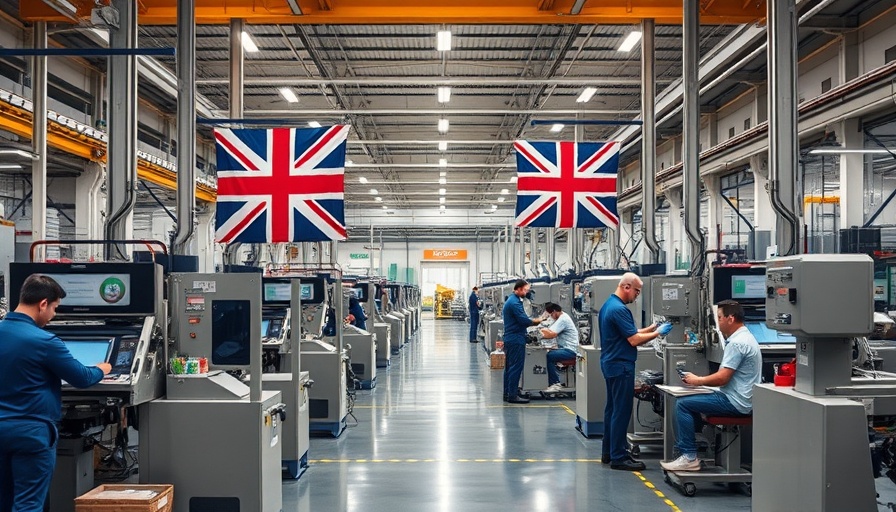
Reimagining Manufacturing: The Role of Reshoring
As the world grapples with the complexities of globalization, a fresh trend is emerging: reshoring. This movement entails bringing back manufacturing capabilities to a country’s shores, a response fueled by geopolitical tensions and supply chain vulnerabilities. A prime example is Isembard, a British startup that recently secured $9 million to establish a network of factories across the UK, catering to critical industries like aerospace, defense, and energy.
Unpacking Isembard’s Innovative Approach
Isembard aims to address the pressing challenge of local manufacturing demands by leveraging technology and automation. Their approach involves operationalizing factories in key Western locations, beginning with a site in London. The startup presents a unique model: clients submit designs via 3D files, Isembard produces the parts with precision and efficiency, and then ships them back—potentially pre-assembled. This model echoes traditional outsourcing but prioritizes local and resilient supply chains.
The Promise of Economic Resilience
In light of the turbulent global landscape, reshoring is more than a manufacturing shift; it's a strategy for enhancing economic resilience. Businesses are increasingly looking for ways to shorten supply chains and mitigate risks associated with overseas production. Fitzgerald, the CEO of Isembard, highlights that while the return to local manufacturing is daunting, the rising costs and complexities of international supply chains make it a necessary evolution.
Competing with Established Models
Despite the promise of local manufacturing, Isembard will face stiff competition from established global providers. The startup positions itself distinctly with a focus on operational efficiency and responsiveness, intending to undercut the entrenched providers not just in speed, but also in cost. The underlying software, MasonOS, which connects and powers Isembard's factories, is designed to maximize these efficiencies.
Navigating Challenges in the Transition
While the concept of reshoring appears advantageous, the transition comes with its unique challenges. Many traditional UK manufacturers have become less capable due to years of outsourcing. Skilled labor shortages, outdated technologies, and fragmented supply networks pose considerable hurdles. By introducing automation and innovative tech, Isembard seeks to overcome these issues, but it remains to be seen how effective they can be in revitalizing the manufacturing landscape.
The Future of Manufacturing: Opportunities and Trends
The journey of reshoring and companies like Isembard represents a significant shift towards localized production. As consumer demand leans increasingly towards sustainability and rapid fulfillment, businesses must adapt. Fitzgerald insists that Isembard’s model not only fulfills current needs but also embraces future trends in manufacturing, paving the way for more local production solutions.
This reshoring trend is indicative of a broader economic movement bridging technology, environment, and manufacturing as society shifts toward sustainability and localized operations. Organizations not only want to reduce their carbon footprint by shortening shipping routes but also increase their agility in responding to market changes.
Conclusion: The Call for Adaptation
The rise of companies like Isembard is a harbinger of the future manufacturing landscape. As industries seek to bolster domestic production and resilience, innovative solutions will emerge. Adopting technologies and approaches that promote sustainable, efficient production aligns with the needs of the modern market. Stakeholders must remain engaged with these developments and consider how their own operations can adapt to the changing landscape of manufacturing.
 Add Row
Add Row  Add
Add 



Write A Comment